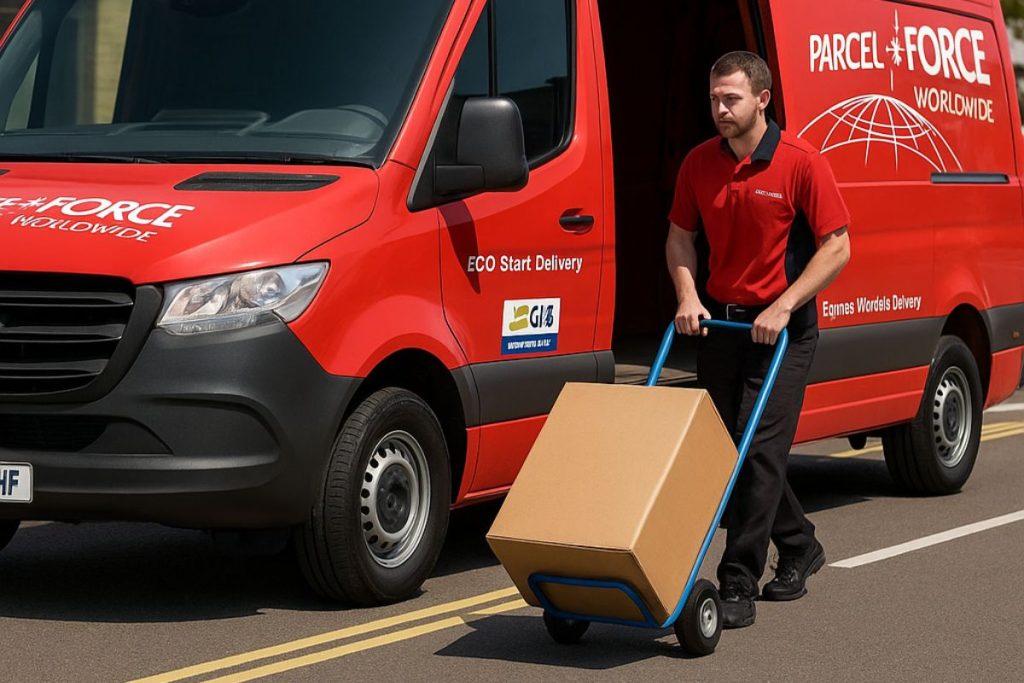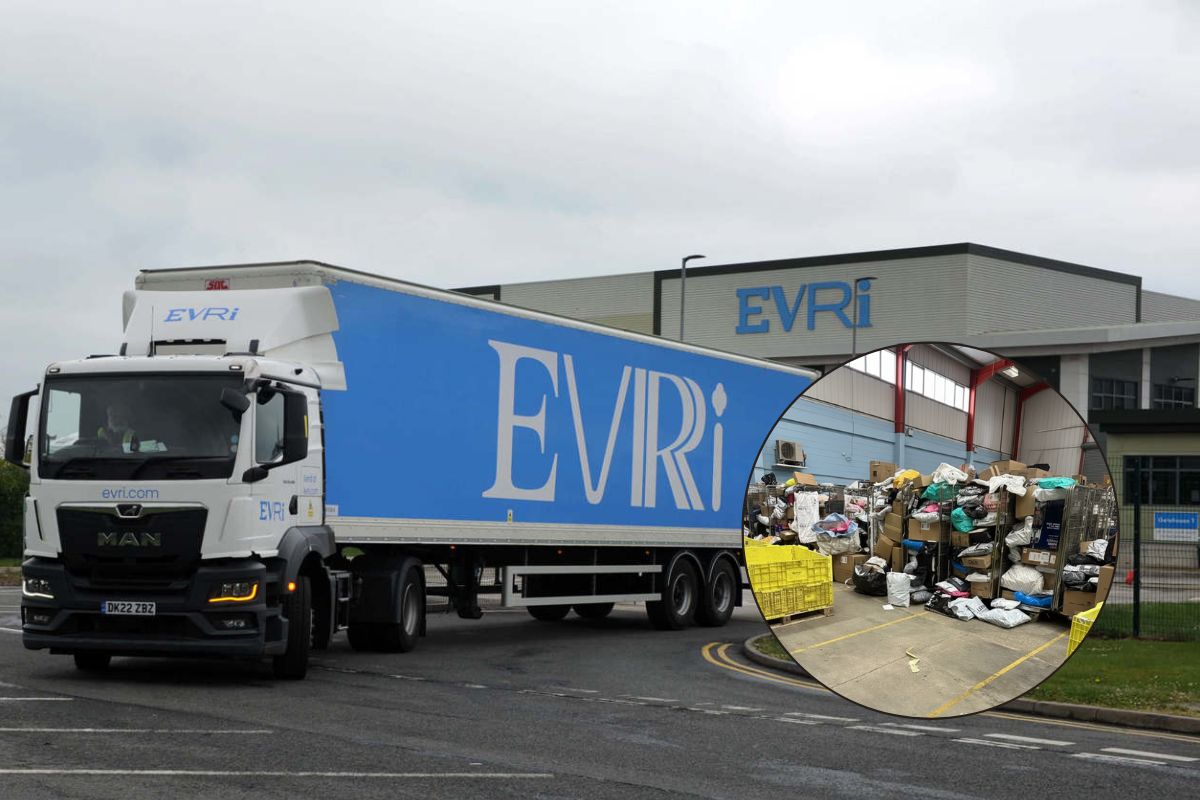Have you ever ordered a package online and wondered whether it will come via Parcelforce or Royal Mail when the retailer lists both providers on their website?
You might be wondering what the difference is, and thinking “aren’t they the same company anyway?”
The relationship between these two delivery giants can be confusing, especially given the simialr red branding and retailers themselves often seeming seem unsure which service they’re actually using.
So, is Parcelforce Royal Mail? Are they the same thing? Are they two entirely separate companies?
As it turns out, the truth somewhere in between.
Is Parcelforce Royal Mail? The Short Answer: Yes, But Actually No
Technically speaking, Parcelforce Worldwide is a part of Royal Mail Group.
To be precise, Parcelforce is a trading name of Royal Mail, which itself is a subsidiary of International Distribution Services.
So in corporate terms, they’re family – but they operate as distinct delivery services with their own networks, pricing structures, and specialties.
Think of them as siblings rather than twins. They share the same parent company, but they’ve grown up to have very different personalities and specialties.
The Family History: How Parcelforce Broke Away
Parcelforce wasn’t always called Parcelforce. Back in 1986, Royal Mail split into three divisions, and in 1990, what was then called “Royal Mail Parcels” was rebranded as “Parcelforce.”
The real separation in operations came in March 2002, when the universal parcels service was transferred to Royal Mail, leaving Parcelforce to focus exclusively on time-guaranteed, next-day, and two-day express deliveries.
This split essentially created the distinction we see today: Royal Mail for everyday parcels and letters, Parcelforce for premium, time-sensitive deliveries.
Size Matters: Why Some Parcels Go Royal Mail and Others Parcelforce
Wondering why your order from ASOS comes via Royal Mail but that camping gear arrives with Parcelforce? It usually comes down to three factors: size, weight, and speed.
Royal Mail Typically Handles:
- Smaller parcels (generally under 2kg for standard services)
- Letters and large letters (obviously)
- Items that can fit through a standard letterbox
- Your Moonpig cards, clothing parcels, and most small packages from onmline retailers that don’t require a signature
Parcelforce Specialises In:
- Heavier parcels (up to a hefty 30kg)
- Bulky items that wouldn’t stand a chance with your regular postie
- Express, time-critical deliveries
- International shipping to over 230 countries
The general rule of thumb used to be that if your parcel was over 5kg or particularly large in size, it would likely go via Parcelforce rather than Royal Mail.
But as we’ll see, those lines have become increasingly blurred.
The Blurring Lines: When Royal Mail Does Parcelforce’s Job (and Vice Versa)
In recent years, the distinction between these two services has become less clear-cut. Royal Mail has expanded its tracked services and now offers options like Tracked 24 and Tracked 48, which compete directly with Parcelforce’s offerings.
At the same time, Parcelforce has been working to capture more of the e-commerce market with services that might previously have gone through Royal Mail.
This convergence means that for many medium-sized parcels (around 2-5kg), either service might end up handling your delivery. The choice often comes down to:
- Which service the retailer has a contract with
- Current pricing deals
- Available capacity during busy periods
- Whether the delivery includes weekends or specific time slots

Different Tracking, Different Experience
One notable difference you’ll experience as a consumer is the tracking and delivery process:
Royal Mail Tracking:
- Generally basic, especially for standard services
- Often just shows dispatch and delivery (or delivery attempts)
- Your regular postie brings your items along with the rest of your post
- Uses the traditional postal network with regional distribution centres and local sorting offices
Parcelforce Tracking:
- More detailed tracking with multiple status updates
- Usually includes a one-hour delivery window notification
- Delivered by a dedicated Parcelforce driver with photo proof of delivery
- Online dashboard for managing deliveries
- More delivery options like choosing a safe place or nominated neighbor
- Operates on a massive “hub and spoke” system where all parcels pass through one of two giant hubs in the Midlands (one for UK, one for international) that can process up to 58,500 parcels per hour
Sunday Delivery: The New Battleground
Both services now offer Sunday delivery, which was once a key differentiator. However, there are still differences in how widely available these services are and how reliably they’re executed.
Parcelforce has been pushing its Sunday delivery service hard, making it available across more of the UK.
Royal Mail’s Sunday service is still catching up in terms of coverage, though both are expanding rapidly.
The Bottom Line: Two Brands, One Big Family
So, is Parcelforce Royal Mail? Yes, in the sense that they’re part of the same corporate family. No, in terms of how they operate day-to-day and the services they provide.
For you as a consumer, the main things to remember are:
- If you’re sending something small, light, or non-urgent, Royal Mail usually offers better value
- For heavy, bulky, or time-critical items, Parcelforce is typically the way to go
- Both are owned by the same parent company, but they operate as separate services
- The lines between them are getting blurrier, so don’t be surprised if what you thought was a Royal Mail parcel shows up in a Parcelforce van (or vice versa)
And of course, whichever service is bringing your parcel, the true test is whether it actually arrives on time and in one piece – which, thankfully, both Royal Mail and Parcelforce tend to do more reliably than some of the other couriers we’ve covered (we’re looking at you, Evri).




